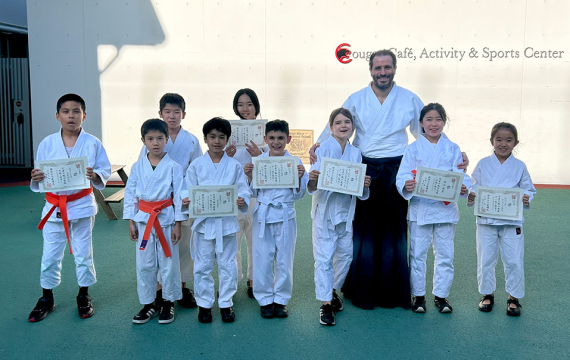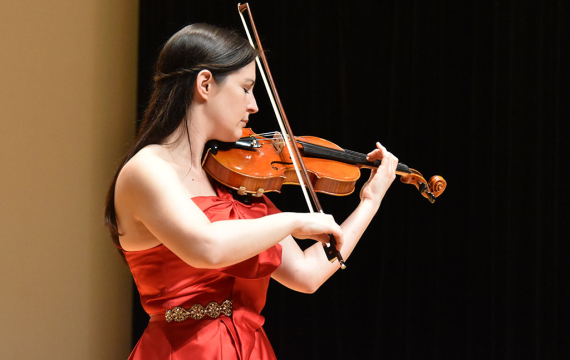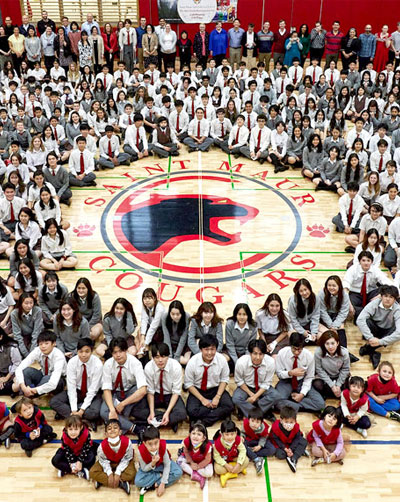
Learn about our rich history that spans over 150 years.
A Short History of the Oldest International School in Japan
In 1872, European and American residents in the bustling treaty port of Yokohama faced a crisis. While vast profits could be made in the silk export trade and the new Meiji government provided stability and security for their small Western enclave, the merchants, diplomats, and missionaries who made up much of the foreign quarter had no schools to educate their children.
Thirteen years after Yokohama had been opened to international trade in 1859, the reckless adventurers and scalawags who had first arrived in the "Wild West of the Far East" had been replaced by families with children growing up quickly. While boys might be sent "home" to boarding schools, parents were reluctant to part with their daughters.
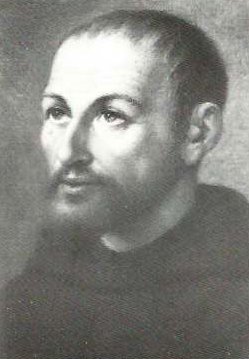
A delegation of Western parents approached the Roman Catholic bishop of Yokohama, Father Petitjean, with their dilemma, and he in turn asked for advice from the most experienced educational pioneer in the region. Mère Mathilde Raclot (1814-1911), a French nun, had established girls’ schools throughout Singapore and Malaysia. Ever since the Sisters of the Infant Jesus had been founded by Father Nicolas Barré (1621-1686) in 1662, their global mission had been education for all, and the Convent of the Holy Infant Jesus (CHIJ) schools had earned a reputation for high standards.
After twenty years in Southeast Asia, Mère Mathilde was ready for a new challenge. At the age of 58, full of youthful vigor and determination, she embarked on the second half of her career. With four other French and Irish nuns, she sailed to Yokohama, arriving on May 23, 1872.
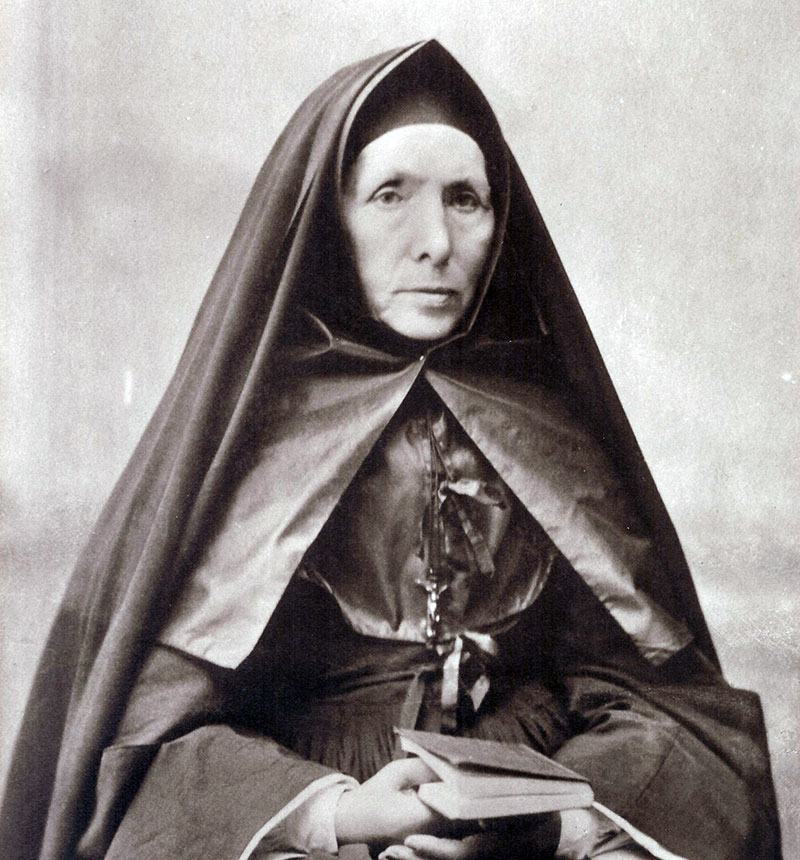 Mère Mathilde led the first Catholic sisters ever to set foot in Japan, at a time when the end of persecution of Christianity was still one year in the future. She founded the first Catholic school in Japan, now known as st Marys School. (The name comes from the Rue Saint-Maur in Paris, the original street where the Mother House of the order has been headquartered since 1677.) After 150 years, it remains the oldest international school in Asia and one of the oldest in the world.
Mère Mathilde led the first Catholic sisters ever to set foot in Japan, at a time when the end of persecution of Christianity was still one year in the future. She founded the first Catholic school in Japan, now known as st Marys School. (The name comes from the Rue Saint-Maur in Paris, the original street where the Mother House of the order has been headquartered since 1677.) After 150 years, it remains the oldest international school in Asia and one of the oldest in the world.
From its beginning, the school embraced all nationalities, languages, and religions, interpreting "catholic" in its original meaning of "universal." The first class of fifteen students included girls from many Western countries. After extraterritoriality ended in 1899, Japanese girls joined them, and in the 20th century students from all over Asia and the world were educated at Saint Maur.
In her extraordinary career in Japan, up to her death in 1911, Mère Mathilde founded schools, orphanages, and other institutions, including the prominent Futaba Gakuen schools, which include Empress Masako and Empress Emerita Michiko amongst their past students.
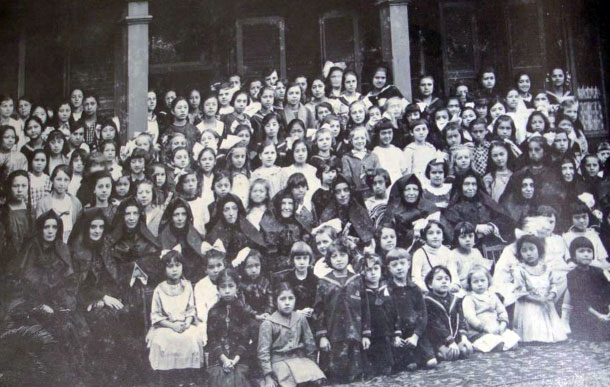
School picture dating from before 1919
The goal of the sisters was to set a Christian example, but never to pressure students into conversion. Mère Mathilde’s successor expressed this approach:
"I did not come to Japan to spread French culture, nor to recruit lightly a number of new Christians. I came to help you become what you want to be: serious-minded, refined, real women."
Mère Thérèse Hennecart (1870-1940).
For 150 years Saint Maur has held classes continuously: in the rubble following the destruction of the school by a typhoon in 1884, an earthquake in 1894, and by the Great Kantō Earthquake of 1923, which killed twelve sisters and many students.
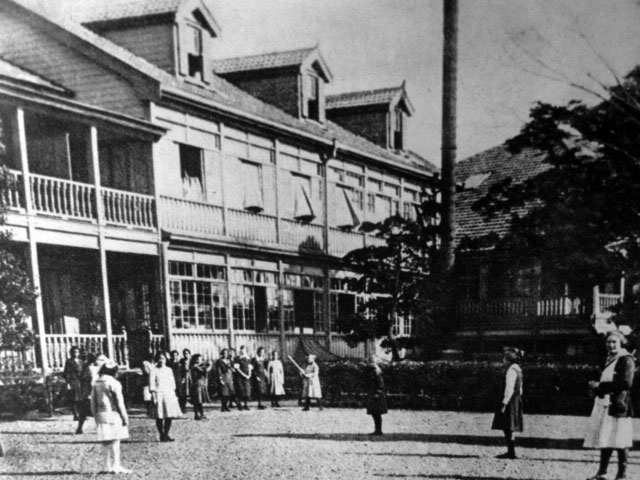
The school as it was before the Great Kanto Earthquake of 1923
Education never stopped, even in an evacuation site in Karuizawa during World War II, fleeing military requisition and wartime bombing. Classes resumed immediately after the 1945 surrender amid the ruins of yet another demolished building. Postwar reconstruction began almost immediately, led by a contingent of Irish sisters who arrived in 1947. Amongst them was Sister Carmel O’Keeffe (1918-2011), who devoted the rest of her long life to Saint Maur, eventually working at the school for 62 years.
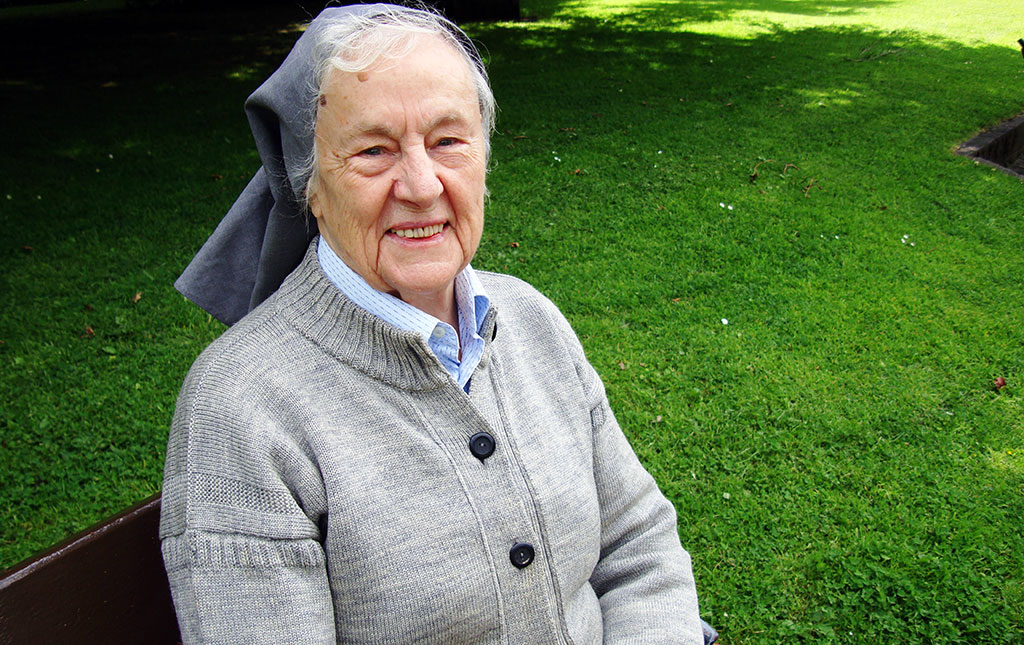
Sister Carmel O’Keeffe (1918-2011)
Saint Maur has always adapted to changing circumstances; its only constant has been innovation. The school pioneered International Montessori education in Japan in 1973 and was among the first in Japan to introduce new curricula such as the globally recognized International Baccalaureate (IB) Diploma program, the International General Certificate of Secondary Education (IGCSE), and the International Primary Curriculum (IPC), as well as the Trinity International Music exams.
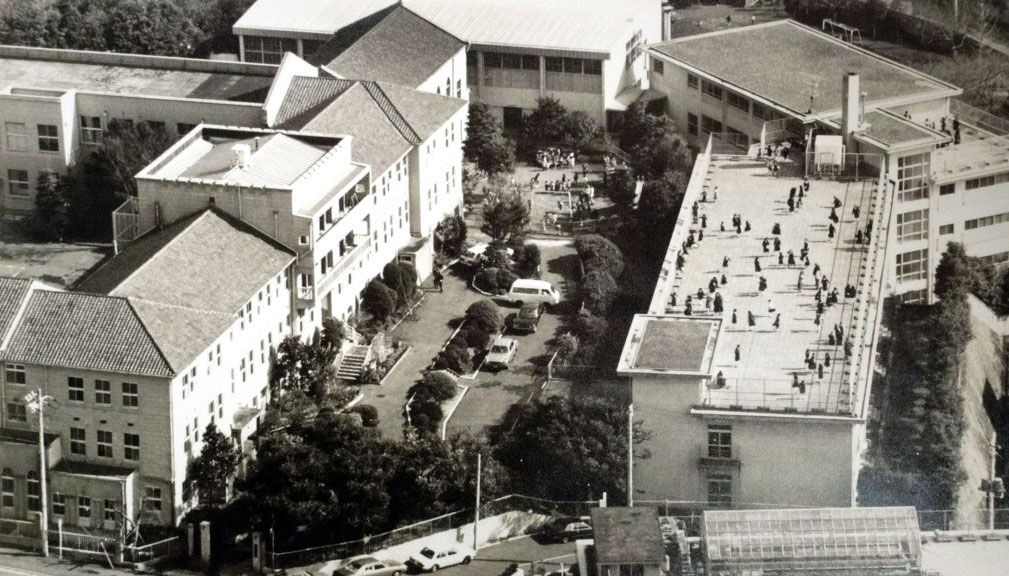
The school's main building c. 1970
No change was more crucial (and, in retrospect, more inevitable) than co-education, beginning in 1982 at the request of parents who wanted the same high standard of education for their sons. Now boys make up half of the enrollment at every level of the school, with a wide variety of sports and other offerings for both boys and girls.
Saint Maur provides a warm and nurturing environment for boys and girls from age 2.5 through Grade 12 with over 40 nationalities, with a student-teacher ratio of 8:1. The decision to value quality over quantity and never to enroll more than 500 students has resulted in a close-knit atmosphere with devoted pastoral care by all teachers. High school students are challenged by college-level IB subjects, taught in small seminar classes, contributing to the high admission rate to competitive universities worldwide: typically graduates enter higher education in over ten countries on four continents.
Saint Maur promotes truly lifelong learning with its wide-ranging Adult Enrichment program, open to all parents. Another innovation has marked a return to the school’s French roots. The Ecole française de Saint Maur à Yokohama offers primary education following the French national curriculum, while also providing English classes and enabling French students to integrate with the English-speaking students in combined classes such as Music and Physical Education.
Now the school occupies five modern buildings on its historic campus, in the heart of Yokohama’s beautiful residential area of Yamate. Near the main classroom and administrative complex are a purpose-built Montessori kindergarten building and an award-winning Fine Arts Center, with a sports field nearby. The Library features a large collection, high ceilings, and soaring windows. The Science Center includes state-of-the-art laboratories for Biology, Chemistry, Physics, and Robotics, with rooftop solar panels generating a sustainable energy source.
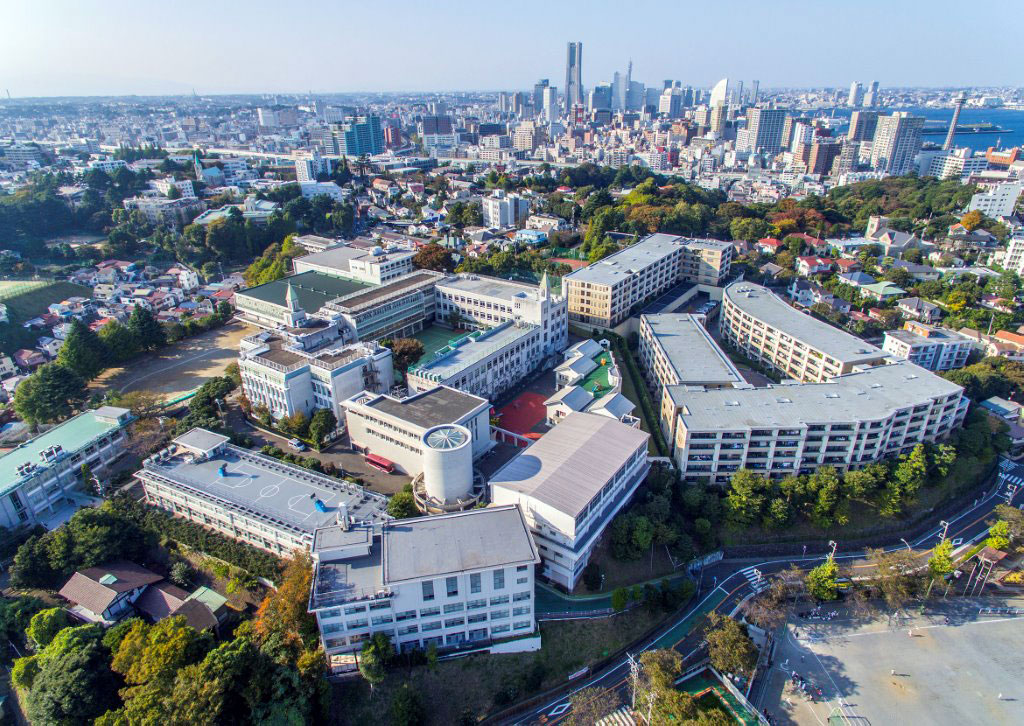
The school campus in 2016
The most recently completed building is the new campus core: the Cougar Café, Activity & Sports Center, with a spacious gymnasium and up-to-date facilities for sports, along with an attractive cafeteria overlooking the port city of Yokohama.
The school is more than the sum of its buildings, however. For 150 years (over nine-tenths of Yokohama’s history), Saint Maur has provided an international outlook and an outstanding education to its residents, some of whom have attended for generations. Mère Mathilde might be amazed to see how Saint Maur has grown, but she would recognize its spirit of service to the city and to the world.


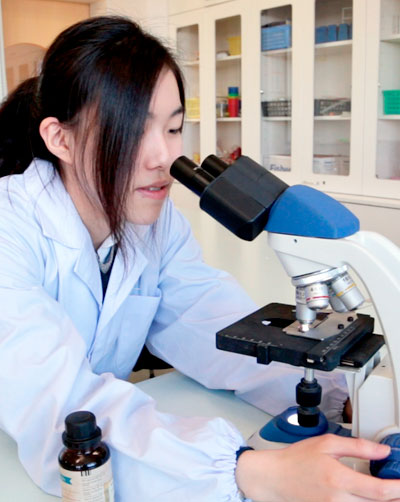
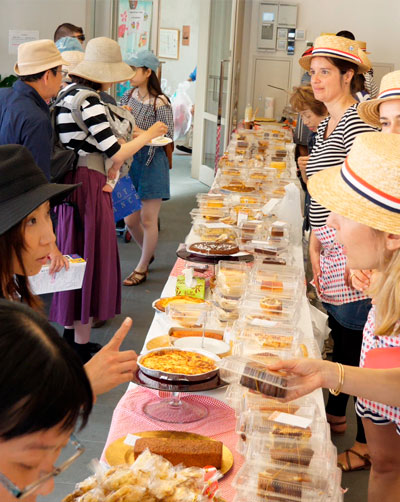
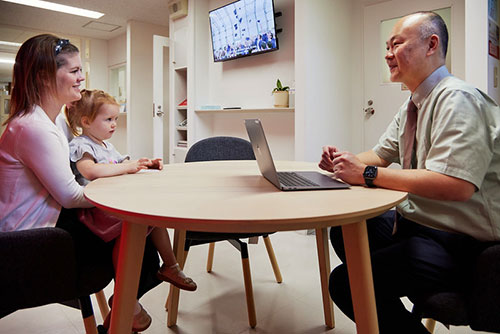
_thumbnail.jpg)
